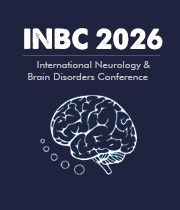Noninvasive Neuroimaging
Noninvasive neuroimaging involves the use of a variety of imaging modalities to visualize the anatomy and activity of the brain without any invasive measures, such as taking tissue samples or performing surgery. It is a powerful tool for diagnosing and monitoring neurological conditions. Structural imaging techniques, such as magnetic resonance imaging (MRI) and computed tomography (CT), are used to identify changes in brain anatomy or assess the effects of age and head trauma. Functional methods, including functional MRI (fMRI) and positron emission tomography (PET) scans, allow us to map brain connectivity and monitor activity of the neurons. MRI is a non-invasive imaging method that uses magnetic fields and radio waves to visualise the internal anatomy and structure of the brain. It can detect abnormal fluid accumulation, lesions, tumors, and alterations in anatomy which may be caused by a disruption in the normal functioning of the nervous system. fMRI is a variation of MRI that can detect brain activity by measuring changes in oxygen levels in the blood. It is used to map the pathways of neural connectivity and assess the impact of neurological injury or disease on brain activity. PET is a more advanced form of functional imaging that involves the injection of a radioactive tracer into the bloodstream. The tracer travels to the brain and binds to target molecules associated with brain activity and metabolism, allowing researchers to track neural activity in real time. In addition to providing information on the brain activity, PET can be used to monitor the effects of drugs on the natural neurotransmitter systems of the brain.

Joe Sam Robinson
Mercer University, United States
Robert B Slocum
University of Kentucky HealthCare, United States
George Diaz
Memorial Healthcare Systems, United States
Daniel Curry
Texas Children’s Hospital, United States
Zhenhuan Liu
Guangzhou University Chinese Medicine, China
Kiran Ghotra
Lake Erie College of Osteopathic Medicine, United States




Title : Atypical presentation of Juvenile myoclonic epilepsy in a 16-year-old female: A Case Report
George Diaz, Memorial Healthcare Systems, United States
Title : What we don’t know about hydrocephalus and It’s management
Daniel Curry, Texas Children’s Hospital, United States
Title : Artificial intelligence-driven DWI and FLAIR for the detection of early stroke changes: A systematic review
Shari L Guerra, The Medical City, Philippines
Title : Mapping neuroplasticity in occupational therapy: Evidence-based interventions with measurable neural outcomes
Jessica Marchant, Texas Woman's University, United States
Title : Non-pharmacologic management of orthostatic hypotension in inpatient rehabilitation: A quality improvement initiative
Laura Steakin, Rehabilitation Institute at Sinai, United States
Title : Non-pharmacologic management of orthostatic hypotension in inpatient rehabilitation: A quality improvement initiative
Mackenzie Weber, Rehabilitation Institute at Sinai, United States